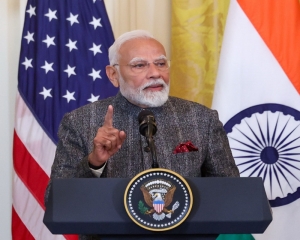A poster war over civil protesters in Lucknow, despite court orders, shows the UP Govt's stubbornness and arrogance
The first record of bounty-hunting or putting the price on the head of a thief came from a graffiti in Pompei in 79 AD. Since then bounties and rogues’ galleries have been used to crack down on criminals, demonise native Americans in the civil war, segregate immigrants and outcasts, tame rebels and break rival chieftains and warlords in a feudatory dispensation of justice across the world. Except that these medieval practices are well past their time; clannish societies have evolved into modern nation-states that address conflict and dissent within a defined socio-political architecture. Nowadays, the most wanted list is usually issued by Interpol. As for shaming the most hated social deviants, even petty criminals have the privilege of covering their faces when they are being taken to and from courts. Yet the Yogi Adityanath Government in Uttar Pradesh overrode all democratic convention and decided to name and shame citizens who may not be guilty of any crime. As he refuses to pull down hoardings with pictures of anti-citizenship law protesters — some of them notables and proven civil rights activists — despite a High Court order on dismantling them, he has thrown us back to medieval times and worse. For by putting out their names, details and addresses, he has placed the judgement call on a dangerous entity called the people’s court, which can be easily swamped by the tide of majoritarian sentiment. Although he insists that exposing protesters is required simply because they fuelled riots and are, therefore, responsible for destruction of public property, no credible case for conviction has been made out against them yet. Besides, while the shaming walls claim that the cost of repairing damaged infrastructure should be recovered from them, there have been news reports of spot recoveries by the State police and musclemen claiming endorsement of the regime, which have been nothing but a sanctioned loot. The Lucknow administration has even served property attachment notices to several individuals. And should the courts limit it further, the State Government passed an ordinance on recovery of damage to public and private properties during political processions. So even the democratic right to dissent via sit-ins comes with caveats. Let us not even hazard a guess about the life threats we are exposing these people to officially, leave aside the incivility of an invasion of their privacy.
Much of the recent actions of the UP Government, be it against citizenship protesters or lynch mobs, would have us believe that it is a law unto itself. What prompts it to ignore the Allahabad High Court order to take the shame posters down as they “reflect colourable exercise of powers?” What compels it to be bull-headed about challenging the order in the Supreme Court despite the latter’s declaration that there is no law to back such action? The intransigence of the Adityanath Government indicates that the “baying for blood” emotion is seen as legitimate redress by a society, which has completely bought into the finger-pointing propaganda of the times. By putting out personal details of protesters and dissenters, who are as much nationalist as any of us, there is an implied punishment of the educated and informed mind, a demonisation of it as anti-Hindu and classist. Suddenly, they are more dangerous than the criminals facing serious allegations, including murder, in Uttar Pradesh. There is a message and licence to the mob here, to do whatever they deem fit with the protesters, much like the anti-semitic posters exposed Jews as the enemy in Hitler’s Germany. It is also a warning to and intimidation of potential dissenters that the establishment will go after them regardless of institutional checks and balances. Furthermore, it is consciously identifying and humiliating people for not being “Indian.” By encouraging a mob hitback against the “guilty”, the Adityanath Government could easily absolve itself of responsibility saying that matters went out of hand in a volatile scenario, just like it did in Delhi. Even if extremist elements of the Sangh Parivar get involved, they become faceless in a mob. There is, after all, a precedent of such perpetrators going unpunished. Posters and shaming walls, something that were so long confined to social media trolls, are now being made mainstream. The Samajwadi Party (SP), although belatedly, has launched a political counterpoint, putting up hoardings of accused ex-Union Minister Chinmayanand and jailed Unnao rape convict Kuldeep Singh Sengar, both former BJP leaders, lambasting the party’s sexual offender list. Of course, they were just as promptly pulled down. Protest graffiti by civil groups are an expression of their angst because the law is often an utter failure. But when an elected Government resorts to such agitprops, it appears not a protector but a destabiliser of citizenry. And it sits smug, particularly when political gains are to be made in the end.



























